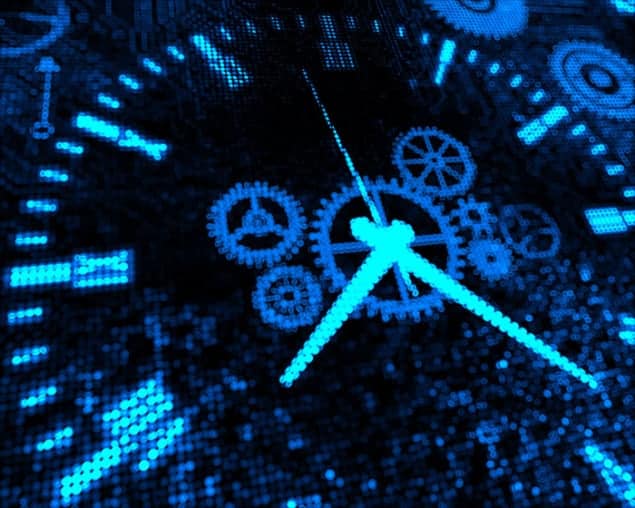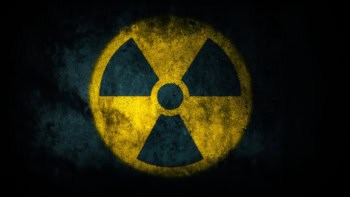
A proposal for a gravitational-wave detector made of two space-based atomic clocks has been unveiled by physicists in the US. The scheme involves placing two atomic clocks in different locations around the Sun and using them to measure tiny shifts in the frequency of a laser beam shone from one clock to the other. The designers claim that the detector will complement the LISA space-based gravitational-wave detector, which is expected to launch in 2034.
Gravitational waves are ripples in the fabric of space–time that are created when masses are accelerated. In February of this year, the LIGO collaboration announced the first-ever direct detection of gravitational waves – from the merger of two black holes – using a pair of kilometre-sized interferometers in the US. Just last week, a second detection was announced by LIGO from a different black-hole merger.
Now, Shimon Kolkowitz and Jun Ye of JILA in Colorado have joined forces with Mikhail Lukin and colleagues at Harvard University to come up with a proposal for detecting gravitational waves using two space-based atomic clocks. Each device would be an optical-lattice atomic clock, which is an extremely precise timekeeper that uses the frequency of an atomic transition to measure time. The atoms are trapped within a 1D optical lattice that is a standing wave created by reflecting laser light from a mirror. This is a very effective way of shielding the atoms from external noise that can degrade clock performance.
Locked lasers
Each satellite will also contain an ultra-stable laser, the light from which will be fired from one satellite to the other and vice versa. Optical systems aboard the satellites will lock the two lasers to a single frequency, essentially creating a single laser operating at a single frequency.
When a gravitational wave propagates through the solar system it will cause a periodic, relative motion between the satellites, bringing them closer together, then farther apart, and then closer together again. This motion will result in a Doppler shift of the laser light as it travels between the spacecraft – with the frequency of the light increasing slightly when the satellites move together and decreasing slightly when the satellites move apart.
In the proposal, this motion will be detected by using the atomic clock in one satellite – called “A” – to measure the frequency of its outgoing laser light. The atomic clock at satellite B will then measure the frequency of the incoming laser light from A. Because the atomic clocks are identical, any difference in the frequencies measured at A and B could only be caused by a gravitational wave – assuming that all other relative motions of the satellites have been reduced to an appropriate level. “It’s these small periodic shifts in the laser frequency that we hope to detect,” says Kolkowitz.
Narrow-band detection
Unlike LISA, which will be able to detect gravitational waves over a relatively wide band of frequencies (0.03–100 mHz), the proposed atomic-clock detector will be narrow-band in nature and will work best for signals at around 3 mHz. While this alone offers no real benefit over LISA – which also has its maximum sensitivity in the millihertz range – Kolkowitz says that the narrow operational “window” of the detector can be shifted along, from 3 mHz to as high as 10 Hz, without significant loss in sensitivity. This tuning could be done by adjusting the process whereby the atomic clocks measure the laser frequencies.
This could prove to be very useful, because much of the tuneable range falls outside of the capabilities of both LIGO and LISA . This means that the gravitational waves from a binary black-hole merger could be first detected by LISA several years before the merger occurs – when the black holes are radiating gravitational waves at millihertz frequencies. As time progresses towards the merger, the frequency of the gravitational waves will increase and move beyond LISA’s operational band. “Using our detector’s tunable narrowband mode, you could continue to detect and track the gravitational waves all the way up to the point when they would become visible to LIGO,” says Kolkowitz.
Clocks on board
Kolkowitz and colleagues believe that their design could be integrated into the LISA spacecraft. “We hope that our proposal offers some motivation to consider putting optical lattice atomic clocks on board,” he says. Kolkowitz also points out that a network of such clocks in space would allow physicists to perform new tests of fundamental laws of nature and searches for unknown physics.
Tim Sumner of Imperial College London works on LISA, and thinks that it is highly unlikely ESA would want to go with a completely new technology/implementation at this stage. Instead, he thinks an atomic-clock-based gravitational-wave detector could be considered for a future mission.
The proposal is described in a preprint on the arXiv server.



